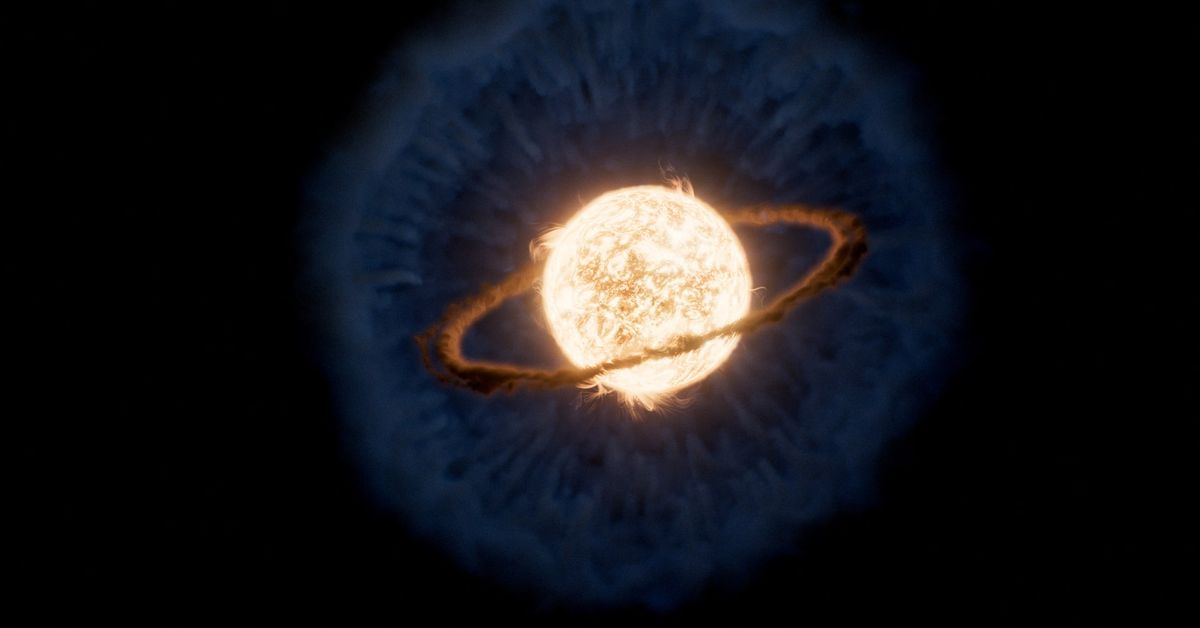SATURDAY April 12, 2025 |
By thenewsdesk.ng
In May 2020, astronomers for the first time observed a planet getting swallowed by its host star. Based on the data at the time, they believed the planet met its doom as the star puffed up late in its lifespan, becoming what is called a red giant.
According to REUTERS, new observations by the James Webb Space Telescope – sort of a postmortem examination – indicate that the planet’s demise happened differently than initially thought. Instead of the star coming to the planet, it appears the planet came to the star, with disastrous consequences – a death plunge after an erosion of this alien world’s orbit over time, researchers said.
The end was quite dramatic, as evidenced by the aftermath documented by Webb. The orbiting telescope, which was launched in 2021 and became operational in 2022, observed hot gas likely forming a ring around the star following the event and an expanding cloud of cooler dust enveloping the scene.
“We do know that there is a good amount of material from the star that gets expelled as the planet goes through its death plunge. The after-the-fact evidence is this dusty leftover material that was ejected from the host star,” said astronomer Ryan Lau of the U.S. National Science Foundation’s NOIRLab, lead author of the study published in the Astrophysical Journal, opens new tab.
The star is located in our Milky Way galaxy about 12,000 light-years from Earth in the direction of the constellation Aquila. A light year is the distance light travels in a year, 5.9 trillion miles (9.5 trillion km). The star is slightly redder and less luminous than our sun and about 70% of its mass.
The planet is believed to have been from a class called “hot Jupiters” – gas giants at high temperatures owing to a tight orbit around their host star.
We believe it probably had to be a giant planet, at least a few times the mass of Jupiter, to cause as dramatic of a disturbance to the star as what we are seeing,” said study co-author Morgan MacLeod, a postdoctoral fellow at the Harvard-Smithsonian Center for Astrophysics.
Jupiter is our solar system’s largest planet.
The researchers believe that the planet’s orbit had gradually deteriorated due to its gravitational interaction with the star, and hypothesized about what happened next.
“Then it starts grazing through the atmosphere of the star. At that point, the headwind of smashing through the stellar atmosphere takes over and the planet falls increasingly rapidly into the star,” MacLeod said.
“The planet both falls inward and gets stripped of its gaseous outer layers as it plows deeper into the star. Along the way, that smashing heats up and expels stellar gas, which gives rise to the light we see and the gas, dust and molecules that now surround the star,” MacLeod said.
Related posts
Categories
- Advertisements (1)
- Agriculture (44)
- Breaking News (25)
- Business (582)
- Crime (946)
- Education (303)
- Entertainment (122)
- Features (13)
- For The Records (41)
- Foreign News (1,141)
- Health (208)
- Home News (332)
- Interview (9)
- Judiciary (335)
- Lifestyle (138)
- Local News (111)
- National News (1,406)
- Opinion (26)
- Politics (931)
- Religion (145)
- Science and Technology (119)
- Security (623)
- Sports (831)
- States' News (750)
- Transportation (309)
- Uncategorized (9)

